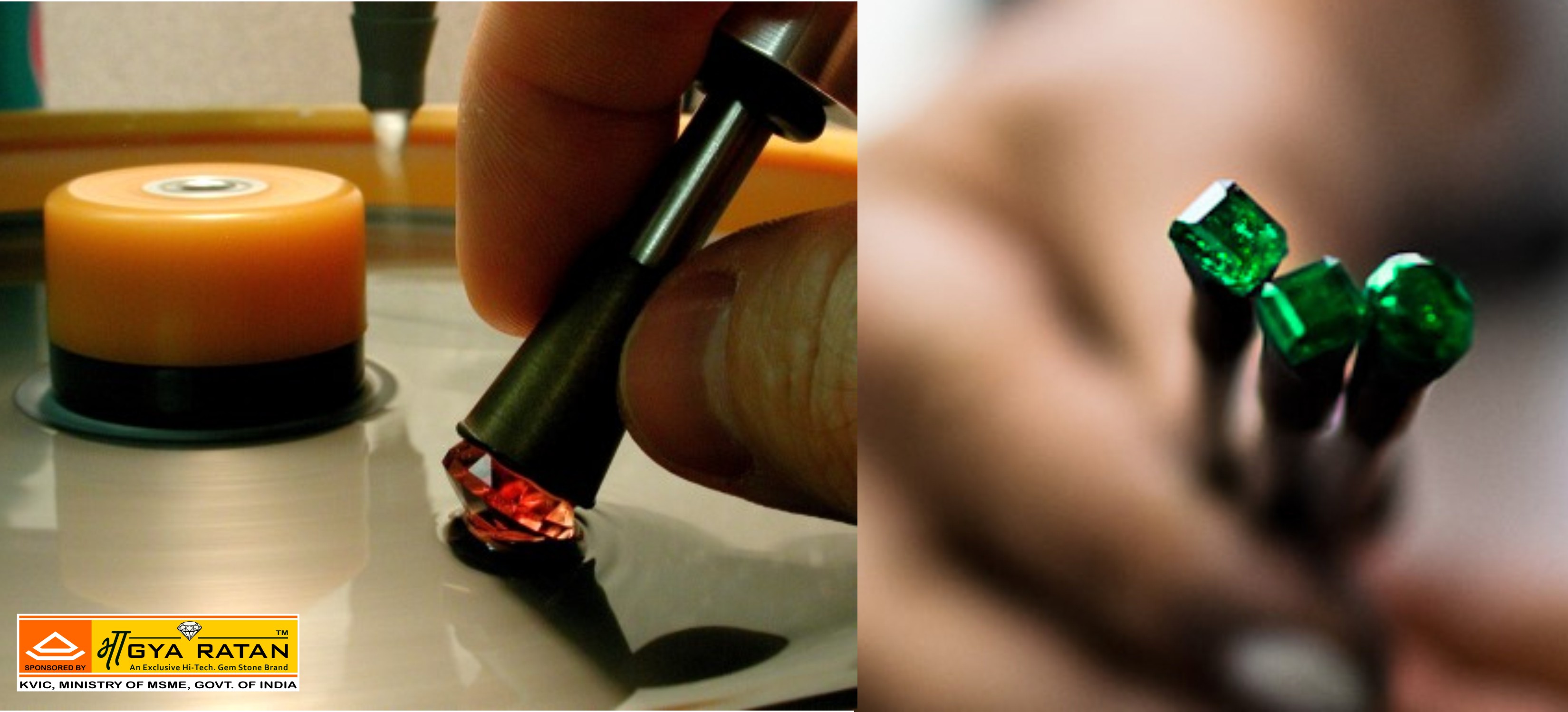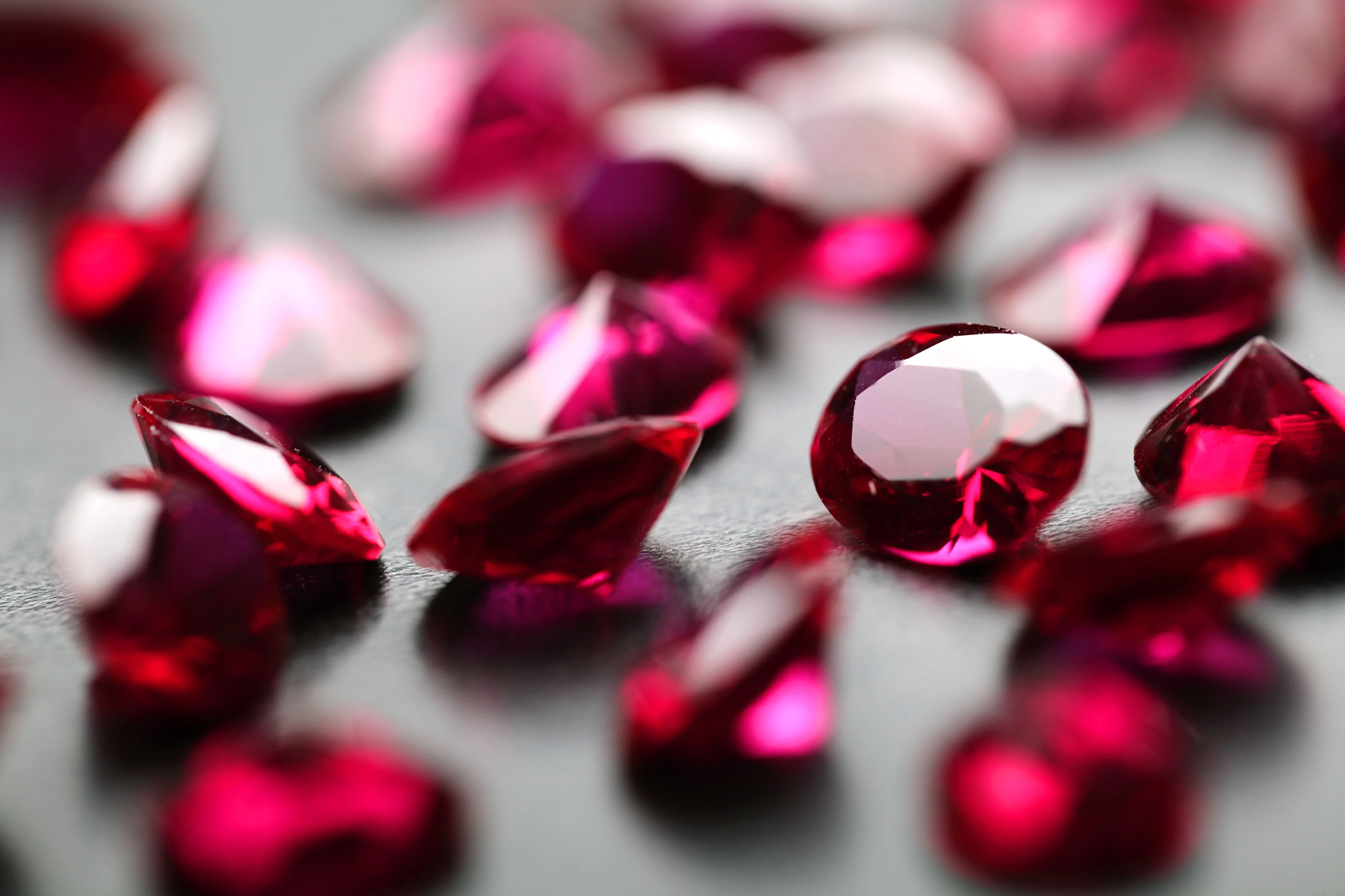
The aim of the cutter is to try and retain as much weight as possible whilst ensuring that the most attractive colour is visible through the table facet. It is also critical that the cutter adhere to certain angles and proportions in order to maximize overall brilliance in the gemstone.
Refers to Cameos, Intaglios, objets d'art and other ornamental pieces.
The oldest stone engraving consisted of cylinders that were engraved with symbols and figures and used as Seals or Amulets.
Today the main centre is Idar-Oberstein where 90% of the worlds gems are engraved.
Refers to all Coloured Gemstones except Diamonds.
Cutting gemstones is called lapidary work, with the cutter referred to as a "Lapidary".
Most cutters tend to specialize in certain stones or a group of stones.

Circular saws coated with diamond dust are used to first of all cut the rough into manageable pieces or by utilizing cleavage planes, which are directions of weakness in certain gemstones, with a small hammer.
Soapy water, oil or paraffin are used as a coolant. Final shaping usually occurs on a vertical roughly grained carborundum wheel cooled with water.
The preferred style of cut for opaque gemstones, heavily included stones or stones displaying "Optical Phenomena" is the "Cabochon" cut.
The final shaping is done on a horizontal grinding wheel. The stones are cemented into a 4-6 inch holder called a "Dop" using a special cement or shellac. Nowadays, special clamps are used as well. "Dops" are guided at an angle related to the facet being cut.
This is achieved either by inserting the wooden "Dop" into pre-drilled holes set at certain angles or by more modern devices used to control and ensure the proper angles are used.
Cutting wheels are usually made of lead, bronze, copper or tin. Polishing powders usually consist of Carborundum,
Diamond, Titanium or Carbide. The speed of the wheel, type of wheel and type of powder used all vary with the stone being cut.
The final polishing takes place on a horizontal wheel, wooden cylinder or leather straps to remove the final traces of scratches and also to improve the lustre.
Polishing compounds used are all finely grained and consist of Tripoli, Chromium Oxide, Diamond Powder, Garnet, Emery or Iron Oxide mixed with either water or in some cases Sulphuric or Acetic Acid.
The cutting of small gemstones is only viable if the labour is inexpensive and in plentiful supply.
Automated faceting machines have recently been introduced but at present have limited applications.
